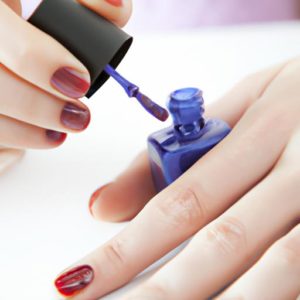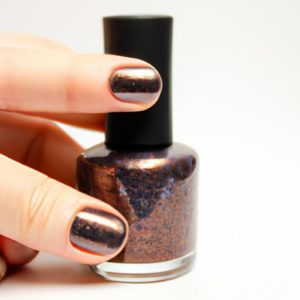Table of Contents
Nail polish remover plays a crucial role in any manicure routine, allowing you to wipe away stubborn polish and start afresh. But have you ever wondered what it’s made of? In this article, we’ll delve into the chemical composition of nail polish remover, its purpose, and safety considerations.
Introduction
Nail polish remover is a liquid-based solvent that effectively dissolves and eliminates nail polish from your nails. It comes in various forms, including acetone-based and non-acetone-based formulas. Understanding the components of nail polish remover is essential in making an informed choice about which one to use.
Chemical Composition of Nail Polish Remover
Nail polish remover comprises several chemical compounds that work together to dissolve nail polish. The four most common ingredients found in nail polish remover are acetone, ethyl acetate, isopropyl alcohol, and butyl acetate.
Acetone
Acetone stands as one of the primary elements in nail polish remover. It is a colorless, flammable liquid with a potent odor. Acetone functions by breaking down the chemical bonds of the nail polish, facilitating easier removal.
Ethyl Acetate
Another prevalent ingredient found in nail polish remover is ethyl acetate. This colorless, flammable liquid emits a fruity fragrance. Ethyl acetate serves as a solvent that aids in dissolving the nail polish.
Roles of Each Chemical Component
Each chemical component in nail polish remover plays a vital role in dissolving and eliminating nail polish.
Solvents
Solvents, such as acetone and ethyl acetate, are crucial constituents of nail polish remover. They work by dissolving the nail polish, making it easier to remove. Acetone, being the most commonly used solvent, effectively breaks down the chemical bonds of the nail polish.
Diluents
Diluents, like butyl acetate, are added to nail polish remover to thin out the formula, making it easier to apply. Butyl acetate, a commonly employed diluent, ensures even coverage when using nail polish remover.
Petroleum Distillates
In some nail polish removers, petroleum distillates are incorporated to aid in dissolving the nail polish. However, due to safety concerns, their usage is declining as they can be harsh on the nails and cuticles.
Water
Water is occasionally introduced into non-acetone-based nail polish removers to dilute the formula. This addition lessens the harshness of the nail polish remover on the nails and cuticles. Non-acetone-based removers are particularly suitable for individuals with sensitive skin or those seeking a milder alternative to acetone-based removers.
Alternatives to Traditional Nail Polish Removers
If you’re looking for a more natural or DIY approach to removing nail polish, several alternatives are worth considering.
Natural Removers
Natural nail polish removers are typically derived from plant-based ingredients such as soy, corn, and orange oil. These removers break down the chemical bonds of the nail polish, facilitating removal. They are an excellent choice for individuals with sensitive skin or those seeking a more environmentally friendly option.
DIY Removers
You can create DIY nail polish removers using common household items such as vinegar, lemon juice, or rubbing alcohol. These removers also work by breaking down the nail polish and can be effective at removing stubborn polish. However, it’s important to note that DIY removers may require more time to show their full potential compared to conventional ones.
Gel Polish Removers
Gel polish removers are specifically designed for removing gel nail polish. They typically contain acetone and other solvents that break down the gel polish’s chemical bonds. Gel polish removers offer superior effectiveness compared to traditional nail polish removers when it comes to removing gel polish. However, it’s essential to be cautious as they can be harsh on the nails and cuticles.
From conventional nail polish removers to natural alternatives and DIY methods, there are various options available to suit your individual preferences and needs.






